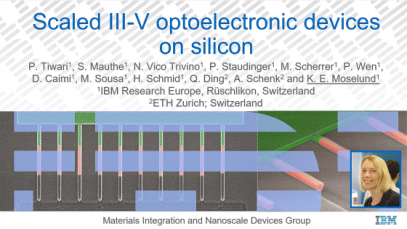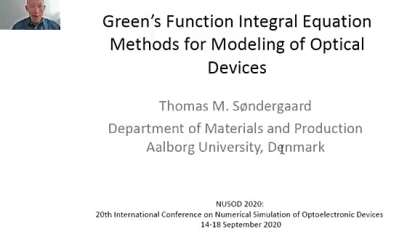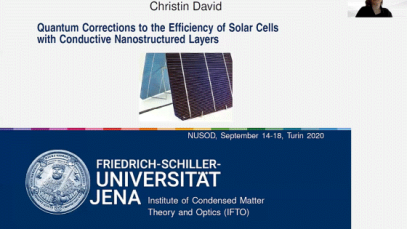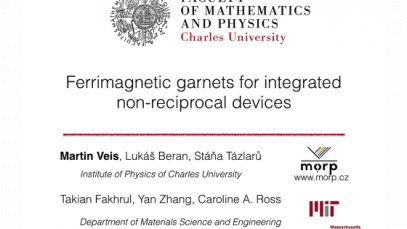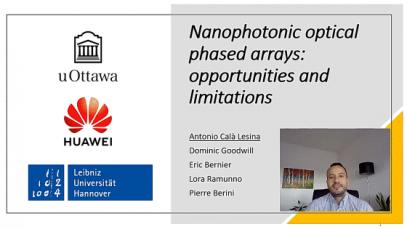Invited presentations
IS01–Scaled III-V optoelectronic devices on silicon
In the present talk we discuss the development of the epitaxial technique Template-Assisted Selective Epitaxy (TASE) and its application for the monolithic integration of scaled III-V active photonic devices on silicon. A unique advantage of TASE for silicon photonics applications is that it enables a truly local integration of III-V material at precisely defined positions, […]
MM01–Green’s function integral equation methods for modeling of optical devices
Green’s function integral equation methods are presented that can be applied for modeling of optical devices in cases where the problem can be formulated as a scattering problem. The methods are applied to study in three dimensions the effect of a cylindrical micro-lens on radiation emitted from a THz photoconductive antenna, and for studying the […]
N01–Quantum corrections to the efficiency of solar cells with conductive nanostructured layers
It was shown in many experiments that the incorporation of metallic nanostructures into photovoltaic devices results in the enhancement of solar cell efficiency. Most simulations of such devices are based on classical electrodynamics and neglect quantum effects arising from nanosized metallic structures. Here, we look at nonlocal electron-electron interactions, Lorentz friction and strong coupling of […]
NM01–Ferrimagnetic garnets for integrated non-reciprocal devices
Ferrimagnetic garnets are promising materials for applications in integrated non-reciprocal devices due to their low optical absorption and relatively large magneto-optical response at telecommunication wavelengths. However, their implementation into phonotic chips is rather difficult due to large lattice parameters and thermal expansion mismatch with common photonic substrates. In this talk, we present our latest progress […]
PD01–Nanophotonic optical phased arrays: opportunities and limitations
Optical phased arrays can steer a beam without mechanical rotation, thus achieving a very rapid scanning rate. The core element of an optical phased array is the pixel (unit cell) and its ability to control the phase and amplitude of the emitted/scattered light. We discuss the role of nanophotonics in achieving pixels that are small […]
SC01–Device level modeling of intermediate band quantum dot solar cells
Among many material candidates for next-generation solar cells, quantum dots offer unique opportunities. Aiming to maximally harness their nanoscale bandgap engineering, in this work we outline a multiscale, multiphysics modeling approach for the device level simulation of quantum dot solar cells. Examples of experimental validation are discussed, emphasizing the potential of light trapping techniques towards […]

